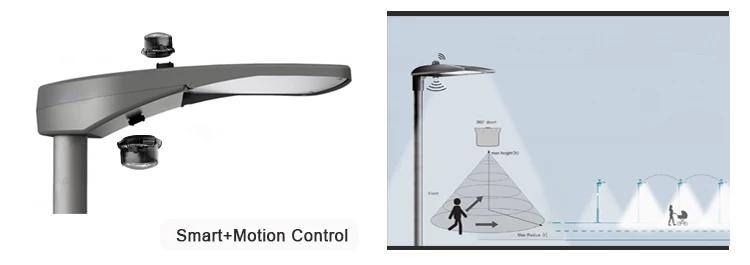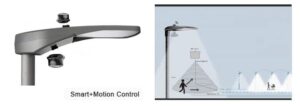Contents
- Why Your Parking Lot Needs LED Lights With Photocell Sensors
- Introduction
- Benefits of LED Lights For Parking Lots
- Importance of Photocell Sensors
- Installation and Maintenance Tips for LED Lights and Photocell Sensors For Parking Lots
- Summar
- References
Introduction
In modern lighting solutions, the spotlight increasingly falls on the integration of LED lights with photocell sensors, particularly in the context of parking lot illumination. The imperative to optimize energy efficiency and enhance safety in commercial and industrial settings has propelled the adoption of this technology.
In this guide, we’ll explore the reasons why LED lights with photocell sensors are indispensable for parking lots. From their ability to minimize energy consumption and operational costs to their role in improving visibility and security, these integrated systems offer a multitude of benefits for businesses and property owners alike.
Benefits of LED Lights For Parking Lots

LED lights offer numerous advantages for parking lots, making them a popular choice for illumination. Here are some key benefits:
Energy Efficiency
LED lights are highly energy-efficient compared to traditional lighting sources like incandescent or fluorescent bulbs. They consume significantly less electricity while providing the same or even better illumination levels. This translates to lower energy bills and reduced carbon footprint, contributing to environmental sustainability.
Longevity
One of the most notable benefits of LED lights is their long lifespan. LED fixtures can last up to 50,000 hours or more, far outlasting conventional lighting options. This longevity not only reduces the frequency of replacements but also lowers maintenance costs associated with servicing and downtime.
Improved Visibility and Safety
LED lights produce bright, uniform illumination that enhances visibility in parking lots, improving safety for both drivers and pedestrians. With better visibility, drivers can navigate parking areas more easily, reducing the risk of accidents and enhancing security by minimizing dark spots where illicit activities may occur.
Instantaneous Lighting
Unlike some traditional lighting technologies that require warm-up time, LED lights illuminate instantly. This instant-on feature is especially beneficial for parking lots where immediate lighting is crucial for security and convenience, particularly during nighttime or low-light conditions.
Directional Lighting and Control
LED lights can be easily directed to specific areas, allowing for precise illumination where needed. Additionally, they are compatible with various lighting control systems, including dimming and motion sensors, enabling further energy savings by adjusting light levels based on occupancy or ambient light conditions.
Durability and Resistance to Environmental Factors
LED lights are inherently durable and resistant to shock, vibration, and temperature fluctuations, making them ideal for outdoor applications like parking lots. They can withstand harsh weather conditions, including rain, snow, and extreme temperatures, without compromising performance or longevity.
Importance of Photocell Sensors

Photocell sensors, also known as photoelectric sensors, play a crucial role in various applications across industries. These sensors detect light and are utilized in numerous devices and systems for different purposes. Here’s a breakdown of why photocell sensors are important:
Automation and Efficiency
Photocell sensors are essential components in automation processes. They enable machines and systems to respond to changes in light conditions automatically. For example, in outdoor lighting systems, photocell sensors detect when it’s dark and trigger the lights to turn on, enhancing safety and energy efficiency by only illuminating when necessary. In manufacturing, these sensors can detect the presence or absence of objects on assembly lines, facilitating seamless operations and improving productivity.
Energy Conservation
One of the significant advantages of photocell sensors is their contribution to energy conservation. By automatically adjusting lighting levels based on ambient light conditions, these sensors help reduce unnecessary energy consumption. For instance, in outdoor lighting applications such as streetlights and parking lot lights, photocell sensors ensure that lights are only on when needed, thereby lowering electricity usage and reducing operational costs.
Enhanced Safety and Security
Photocell sensors play a vital role in enhancing safety and security in various environments. In outdoor settings, such as roads and pathways, these sensors ensure adequate lighting during low-light conditions, improving visibility for pedestrians and drivers and reducing the risk of accidents. Additionally, in security systems, photocell sensors detect unauthorized entry by triggering lights or alarms when light levels change unexpectedly, helping deter intruders and protect property.
Cost-Effectiveness
Implementing photocell sensors can result in significant cost savings over time. While there may be initial investments in installing and integrating these sensors into systems or devices, the long-term benefits outweigh the upfront costs. By optimizing energy usage, reducing maintenance requirements, and improving operational efficiency, photocell sensors help organizations save money in the long run, making them a cost-effective solution for various applications.
Installation and Maintenance Tips for LED Lights and Photocell Sensors For Parking Lots

When it comes to setting up LED lights and photocell sensors for parking lots, there are some key tips to keep in mind to ensure everything runs smoothly:
Placement Matters: Proper placement of LED lights is crucial for optimal illumination. Make sure to strategically position them to cover the entire parking lot area evenly. Similarly, install photocell sensors in locations where they can effectively detect ambient light levels without obstruction.
Follow Manufacturer Guidelines: Each LED light and photocell sensor may come with specific installation instructions from the manufacturer. It’s essential to follow these guidelines carefully to ensure the proper functioning and longevity of the equipment.
Ensure Adequate Wiring: Proper wiring is essential for both safety and functionality. Ensure that all connections are secure and that the wiring is suitable for outdoor use to withstand exposure to the elements.
Consider Height and Angle: LED lights should be installed at an appropriate height and angle to provide optimal visibility while minimizing glare and light pollution. Similarly, adjust the angle of photocell sensors to accurately detect changes in ambient light levels.
Maintenance Tips for LED Lights and Photocell Sensors
Regular maintenance is essential to keep LED lights and photocell sensors operating efficiently and extend their lifespan:
Clean Regularly: Dust, dirt, and debris can accumulate on LED lights and photocell sensors over time, reducing their effectiveness. Regularly clean them with a soft cloth or brush to remove any buildup and ensure maximum light output and sensor sensitivity.
Inspect for Damage: Periodically inspect LED lights and photocell sensors for any signs of damage, such as cracks, corrosion, or loose connections. Address any issues promptly to prevent further damage and maintain optimal performance.
Test Functionality: Regularly test the functionality of both the LED lights and photocell sensors to ensure they are operating correctly. This can involve manually triggering the sensors to check for proper activation and verifying that the lights turn on and off as expected.
Replace Faulty Components: If any LED lights or photocell sensors are found to be faulty or malfunctioning during inspections or testing, replace them promptly with new ones to prevent disruptions to parking lot lighting and security.
By following these installation and maintenance tips, you can ensure that LED lights and photocell sensors for parking lots are installed correctly, operate efficiently, and remain in good condition for years to come.
Summary
Switching to LED lights equipped with photocell sensors is a game-changer for your parking lot. These smart lights not only enhance safety and security but also slash energy costs and maintenance hassles. By automatically adjusting to ambient light levels, they ensure optimal illumination at all times, promoting a welcoming and secure environment for drivers and pedestrians alike. Embracing LED lights with photocell sensors isn’t just a choice; it’s a necessity for modern parking lots, offering efficiency, safety, and peace of mind.






